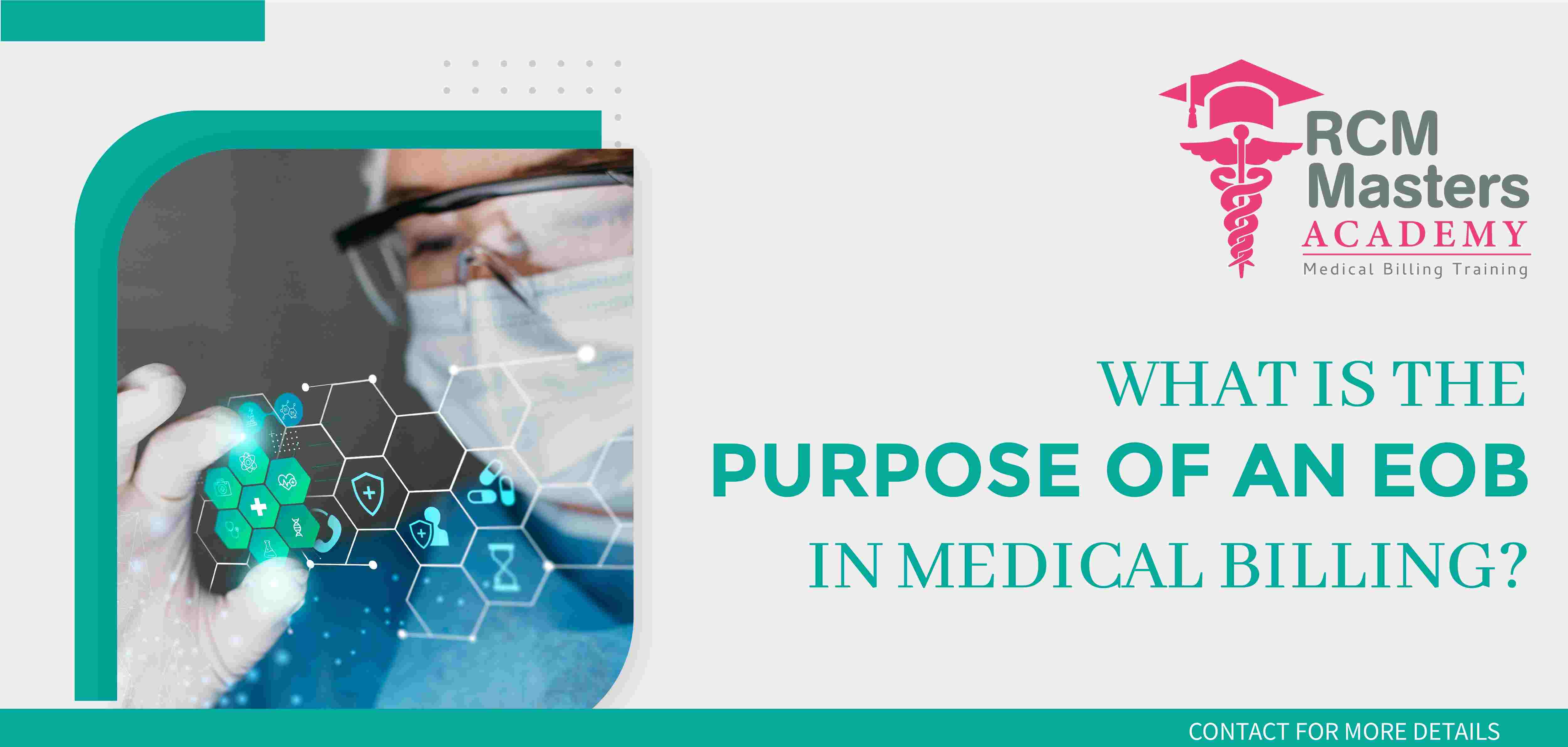 info@rcmmastersacademy.com
info@rcmmastersacademy.com

When you receive medical care, you are typically billed for the services rendered. This billing process can be complicated, especially when dealing with insurance companies. One important document that can help make sense of the process is the Explanation of Benefits (EOB).
An EOB is a statement sent by an insurance company to a policyholder, explaining how a medical claim was processed. It provides a summary of the medical services that were provided, the amount billed by the healthcare provider, the amount covered by insurance, and any remaining balance that the policyholder is responsible for paying.
The primary purpose of an EOB is to provide transparency and clarity about medical billing processes to patients. Patients can use the information provided in the EOB to verify that their healthcare provider was paid correctly and that they were charged the correct amount. It can also be used to detect any errors or fraudulent activity in the billing process.
Here are a few key things to look for in an EOB:
1. The date of service: This is the date on which the medical service was provided.
2. The amount billed: This is the total amount that the healthcare provider charged for the services rendered.
3. The amount covered: This is the amount that the insurance company has agreed to pay for the services.
4. The patient's responsibility: This is the amount that the patient is responsible for paying. This could include a co-pay, deductible, or coinsurance.
5. The reason for any denials: If a claim was denied, the EOB should provide an explanation for why it was denied. This could be due to a number of factors, such as a lack of medical necessity or a coding error.
Overall, the purpose of an EOB is to ensure that patients are informed about the medical billing process and that they are not being overcharged or incorrectly billed. It can be a helpful tool for patients to better understand their healthcare costs and to ensure that they are receiving the appropriate coverage from their insurance provider.
It's important to note that an EOB is not a bill. Patients will still receive a separate bill from their healthcare provider for any remaining balance that they are responsible for paying. However, the EOB can help patients understand why they are being billed a certain amount and whether or not they need to dispute any charges.
In conclusion, an EOB is an important document that plays a crucial role in the medical billing process. It provides patients with transparency and clarity about the costs associated with their medical care and helps them understand how their insurance coverage works. If you receive an EOB, take the time to review it carefully and reach out to your healthcare provider or insurance company if you have any questions or concerns.
You can enroll for our Online Medical Billing Training here: